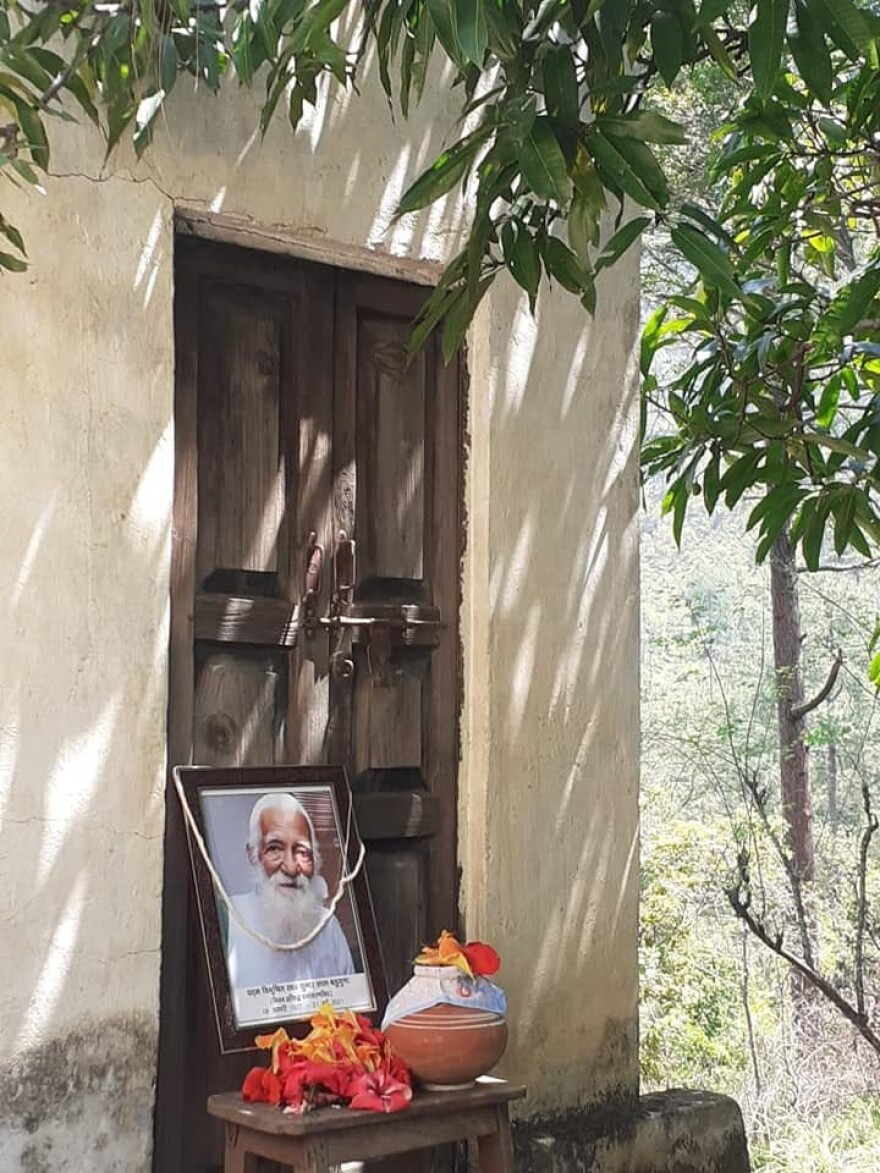On May 21, 2021, Sunderlal Bahuguna passed away from COVID-19 at the age of 94. His passing didn’t make the news in any of the major outlets in the US. But it got extensive coverage in India.
Bahugana was the most well-known leader of the Chipko movement in India, an anti-deforestation movement in the Indian Himalayas in the 1970s. Most of the Chipko activists were rural, poor, mostly illiterate women, living subsistence livelihoods. They took on a powerful government forestry department that was increasingly in bed with big private companies and won.
The movement is named for an infamous action in which village people reportedly hugged and chained themselves to trees to stop loggers from cutting them.
“So, Chipko in Hindi means hugging,” said Haritima Bahugana, Sunderlal’s granddaughter.
“They used to hug the trees, and they used to say, ‘if you're going to cut this tree, you're going to cut me as well, because it has got equal life than I have.’”
The Chipko movement not only provoked greater environmental consciousness across India, but also inspired other environmental movements across the world.
The beginnings of the movement
The Chipko movement began in 1973 in Uttarakhand, a rural, mountainous region in northern India. Many men in Uttarakhand left for jobs in the towns and cities, and women stayed behind, depending on the forests for their livelihoods. They gathered firewood for heating and cooking, grass to feed their livestock, and wild medicinal herbs.
But as more trees were logged for manufacturing railroad ties, furniture, paper, and sports equipment like tennis rackets, local women had to walk further and further to get their daily necessities.
The tipping point came when the government granted access to a sporting goods company to cut hundreds of trees, just after denying a local co-op’s request to cut down just ten trees.
The companies sent their lumbermen to cut the trees, but the villagers confronted them in the forests, and stood their ground.
While this first confrontation was mostly men, most of the subsequent confrontations were led by women.
Bahuguna’s life
Bahuguna is well-known as the face of the Chipko movement because he was its messenger. He spread the word of the Chipko movement on foot, including a 4,870 kilometers tour (roughly the equivalent of walking from Boston to Seattle) in the early 80s.
“I am simply the messenger of the movement. It was the ladies who hugged the trees. I simply went with this message from one village to another,” he said in an interview.
“He was actually instigated by Gandhi, who actually told him that if you have a message you cannot [concentrate it] in an area and expect it to be bigger. So they advised him to travel as much as he can and spread the message,” said Haritima Bahuguna, Sunderlal’s granddaughter.
Sunderlal Bahuguna had been influenced by Gandhian principles of civil disobedience since the young age of 13, when a disciple of Mahatma Gandhi walked up to him and his friends on the street, carrying a big box with a charkha, a kind of loom or spinning wheel, inside.
This was back in 1940, when India was still under British colonial rule and the government suppressed the weaving of clothes by the Indian people.
“And he said, ‘this is the weapon with which we are going to produce our own clothes,’” said Haritima.
The encounter inspired the young Bahuguna. After Indian independence, he joined the National Congress in 1948.
As a politician, Bahuguna met a woman named Vimla Behn, a Gandhian social activist dedicated to the education of village women. Family members of Bahuguna and Vimla Behn arranged for them to be married, but Vimla Behn said she’d marry him on one condition: he must leave politics and settle in the hills, where together, they’d help people.

He agreed. After they were married in 1956, they moved to a remote village in Uttarakhand, where they set up an ashram that wasn’t restricted by caste or gender. An ashram is a spiritual retreat community in Indian religions, and this particular ashram was dedicated to the education of village people. Their ashram became the meeting grounds for many Gandhian activists to discuss issues like alcoholism, casteism, gender discrimination, and, increasingly, deforestation.
In 1981, the Indian government offered Bahuguna one of the highest civilian honors in India, the Padma Shri award. But he refused it.
“He refused because even then, the government has not banned forest deforestation in Uttarakhand. He's like, ‘I do not deserve any honor or award until what I want is not done,” said Haritima, Bahuguna’s granddaughter.
Less than two months after Bahuguna’s refusal of the award, the government finally banned all logging above a thousand meters in Uttarakhand. U.N. data shows that around this time, India’s forest coverage turned from a steady decline, to a steady increase that continues to this day. Chipko is also at least partially credited for the creation of a completely new government agency in 1980 called the Ministry of Environment and Forests.
A lover of music and poetry, his granddaughter recalled that Bahuguna would often recite a verse from the Bhagavad Gita.

“It means… do your work, do not be concerned about the results of it,” Haritima said. “He always used to tell me that it's my job to do my job to the best of my potential... and that whatever it is that I get, that's not in my hand, that someone else decides.”
Sunderlal Bahuguna died on May 21st, 2021. A memorial service was held for him on June 5th, which is World Environment Day, a day established by the U.N. to encourage awareness and action to protect our environment.









